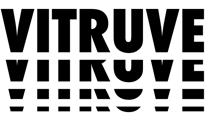Templates are the foundation of how you build structured training in Vitruve Hub. They allow you to create everything from a single exercise to a multi-phase training program.
Templates are organized hierarchically as follows:
Exercises → Supersets → Blocks → Workouts → Phases → Programs
Let’s break down how each one works 👇
🏋️ Exercises
The most basic building unit in the Builder.
Here you can view, create, and edit all the exercises used across your programs.
To access your exercises:
- Go to Builder → Templates → Exercises.
- You’ll see your complete list of exercises.
- Tap the “+” icon (top-right corner) to add a new one.
Each exercise can include:
- Name and description
- Tags or muscle group classification
- Whether it’s a VBT exercise or not
- Detailed prescriptions (load, reps, RPE, etc.)
Click the three-dot icon (…) next to any exercise to edit its prescription or settings.
💡 Exercises can be reused across supersets, blocks, and workouts.
🔄 Supersets
A superset combines two or more exercises performed back-to-back.
You can mix VBT and non-VBT exercises within the same superset.
To create a superset:
- Go to Builder → Templates → Supersets.
- Click the “+” icon to add exercises in sequence.
- Adjust rest times and order as needed.
💡 Supersets are great for pairing complementary movements or creating efficient circuits.
🧱 Blocks
A block is a set of exercises or supersets grouped together — usually focused on a specific goal or muscle group.
For example:
- “Lower Body Power Block”
- “Upper Strength Block”
Blocks help structure your workouts and make programming modular.
Each block can be reused across different workouts or programs.
🗓️ Workouts
A workout is a complete daily session built from blocks, supersets, or exercises.
In Workouts, you can:
- Combine multiple blocks
- Add warm-up or accessory work
- Include rest times and instructions
💡 Each workout represents one training day in your program.
📆 Phases
A phase is a collection of workouts — usually representing a training block over several weeks.
Examples:
- Hypertrophy Phase (Weeks 1–4)
- Strength Phase (Weeks 5–8)
- Power Phase (Weeks 9–12)
You can adjust the duration, volume, and intensity for each phase independently.
🏁 Programs
Finally, programs are complete multi-phase plans.
They combine all your phases into one structured roadmap for athletes or teams.
Each program can include:
- Multiple phases
- Full calendar distribution
- Assigned athletes or groups
- Automatic tracking and progress analytics
💡 Programs are the highest level of training design — everything built below (exercises, blocks, phases) connects here.
